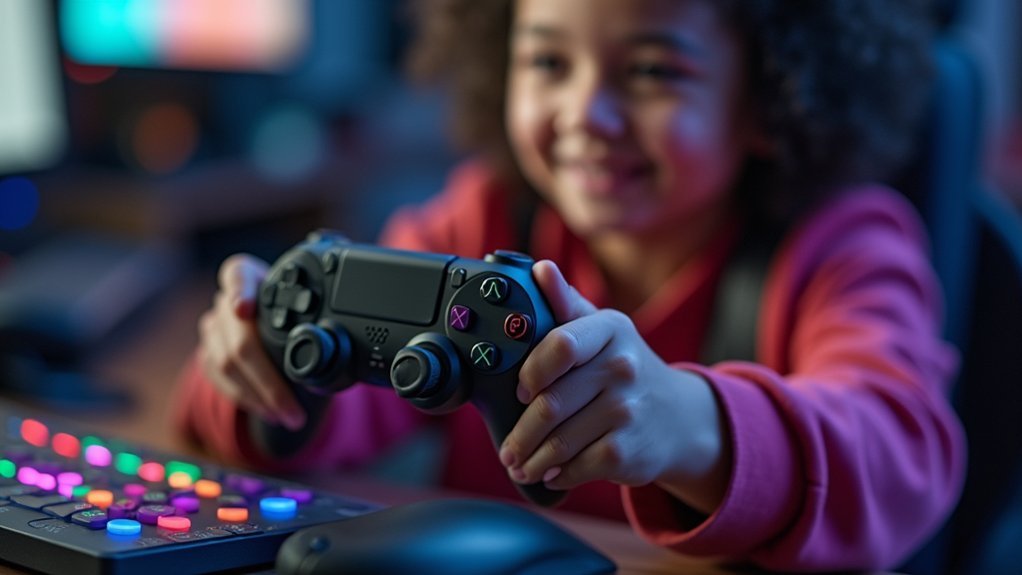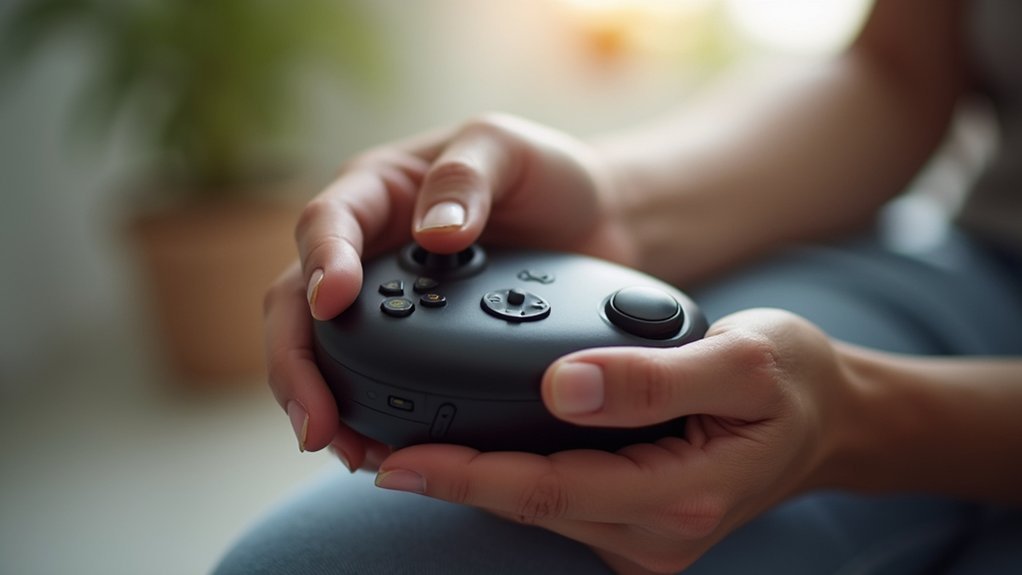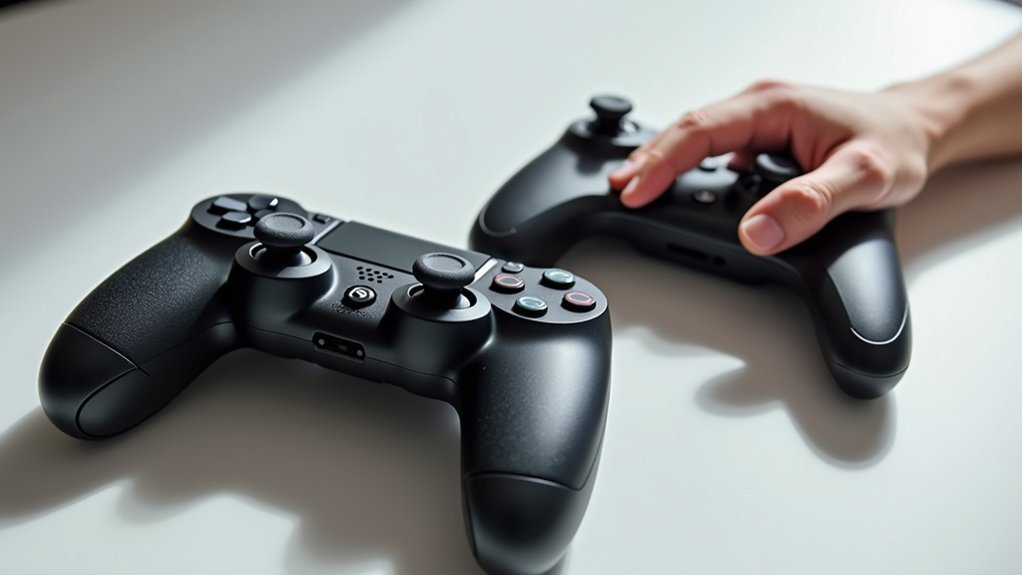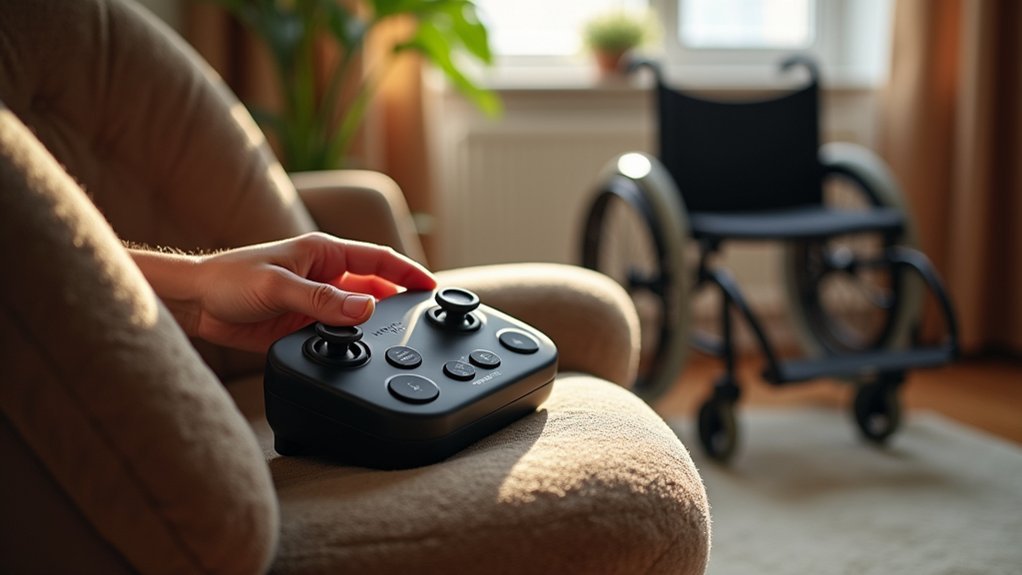Pressure controllers transform gaming for limited mobility by requiring minimal physical effort while offering maximum control. You’ll benefit from customizable sensitivity settings that respond to slight movements, whether through sip-and-puff mechanisms or gentle finger pressure. With programmable macros, complex commands become simple inputs, while wheelchair-compatible mounting guarantees stable positioning. These features enable you to participate independently in competitive gaming without physical barriers. Discover how these adaptive interfaces can specifically address your unique mobility challenges.
How Pressure Controllers Promote Independence for Mobility-Challenged Gamers

While traditional game controllers create significant barriers for players with limited mobility, pressure controllers are revolutionizing accessibility in gaming. These adaptive devices let you play without a caregiver’s assistance, promoting genuine autonomy through customizable sensitivity settings that match your unique physical abilities.
You’ll find that even minimal movements—whether through sip-and-puff mechanisms or slight finger pressure—can translate into precise game actions. Complex commands become simple through programmable macros, while mounting systems compatible with wheelchairs guarantee stable, accessible positioning. Devices like the Microlight Switch only require 11.3 grams of pressure to activate, making gaming possible for those with extremely limited strength.
The impact is profound: you can participate in competitive gaming independently, experience reduced fatigue during extended sessions, and enjoy the cognitive benefits of gaming on your own terms—all without the frustration of traditional button-mashing requirements.
Key Features of Adaptive Gaming Interfaces for Physical Limitations
Regardless of your physical limitations, today’s adaptive gaming interfaces offer an unprecedented level of customization and accessibility.
These interfaces embrace the social model of disability, focusing on removing barriers rather than highlighting individual limitations.
The most effective adaptive interfaces incorporate:
- Remappable controls that let you customize button functions to match your specific abilities
- Multiple input modes including eye-gaze technology, pressure sensors, and voice commands
- Specialized peripherals like the Xbox Adaptive Controller that connect with third-party assistive devices
These features work together to create a tailored gaming experience that enhances your autonomy and improves engagement. Pressure-based controllers provide crucial options for players with limited hand mobility, ensuring gaming remains accessible regardless of physical constraints.
Customizing Pressure Sensitivity for Different Mobility Conditions

When living with mobility challenges, finding the right pressure sensitivity in your controllers can transform your gaming experience.
Modern controllers offer adjustable sensitivity that can be tailored to accommodate conditions like Parkinson’s disease, spinal injuries, and muscle weakness.
You’ll benefit from pressure mapping technology that analyzes your unique needs in real-time, allowing for immediate adjustments. For Parkinson’s, these controllers can help manage tremors, while those with neurological conditions gain tailored support that compensates for specific impairments.
Custom seating solutions that distribute weight evenly complement these controllers, reducing pressure points and preventing sores. Advanced controllers integrate power-assist capabilities that provide crucial support for gamers with muscle weakness or limited motor control.
With power tilt and recline features, you can shift your body weight as needed, maintaining comfort during extended gaming sessions and ultimately increasing your independence and enjoyment.
The Impact of Accessible Controllers on Gaming Enjoyment and Progress
Accessible controllers have revolutionized gaming for people with limited mobility, transforming what was once a frustrating experience into an enjoyable and competitive activity.
With customizable input and adjustable sensitivity, you’ll experience streamlined gameplay that adapts to your unique physical capabilities, reducing fatigue during extended sessions.
Gameplay adapts to you, not the other way around—reducing fatigue while maximizing your unique abilities.
These controllers directly enhance your gaming experience through:
- Equal competitive footing – you can compete at higher levels with controls optimized for your abilities
- Continuous, uninterrupted play – no more stopping due to physical limitations
- Enhanced precision and control – sensitivity adjustments guarantee you achieve the exact movements needed
This technology addresses a critical need since accessibility issues remain prevalent in gaming, with 66% of gamers with disabilities reporting barriers that limit their participation.
Comparing Standard vs. Pressure-Sensitive Gaming Solutions

Traditional controllers and pressure-sensitive alternatives offer fundamentally different gaming experiences for people with limited mobility. While standard controllers utilize simple on/off commands that require discrete button presses, pressure-sensitive options provide a continuous range of inputs based on applied force.
You’ll find that pressure controllers eliminate the need for repetitive pressing actions, reducing physical strain during extended play sessions. They can register multiple functions on a single input depending on how hard you press, which means fewer buttons to manage overall. This adaptability makes gaming more accessible if you have limited motor precision. Games like Gran Turismo utilize 256 levels of pressure sensitivity to allow for nuanced control over acceleration and braking without requiring multiple button presses.
Unlike digital controllers’ binary nature, analog inputs allow you to customize sensitivity levels to match your specific capabilities, creating a more personalized and comfortable gaming experience without sacrificing control complexity.
Success Stories: Gamers Overcoming Mobility Barriers With Adaptive Controllers
Throughout the gaming community, remarkable success stories have emerged as players with mobility challenges discover new freedom through adaptive controllers.
These technologies transform gaming experiences by requiring minimal hand movement while allowing precise control through pressure-sensitive inputs. These controllers can detect nuanced pressure variations that adapt to individual player capabilities, enhancing accessibility substantially.
Players report significant improvements in their gaming lives:
- Enhanced social interaction as they’re able to join friends in multiplayer games they previously couldn’t access
- Deeper immersion in storytelling experiences when controls no longer create barriers to gameplay
- Greater variety in gaming options, from racing games with pressure-sensitive triggers to complex action titles
The gaming community continues to champion these innovations, recognizing how adaptive controllers don’t just make games playable—they make them enjoyable, creating truly inclusive experiences for everyone regardless of physical ability.
Frequently Asked Questions
Are Pressure Controllers Covered by Insurance or Medicare?
Yes, pressure controllers are covered by Medicare under Part B’s durable medical equipment benefit. Your insurance may also cover them, but you’ll need a physician’s prescription and proof of medical necessity.
How Do You Clean and Maintain Pressure Controllers?
Power down your controller before cleaning. Use contact cleaner for electrical parts, compressed air for dust removal, and mild solvents for sensor surfaces. Inspect valves, clear vent pipes, and replace seals regularly. Dry completely before reconnecting.
Can Pressure Controllers Be Used With Existing Furniture?
Yes, you can use pressure controllers with existing furniture. Their compact design, flexible mounting options, and adaptability make integration straightforward. You’ll appreciate how they fit into various spaces without requiring specific orientations.
What Is the Average Lifespan of Pressure Controller Systems?
You can typically expect pressure controller systems to last 5-10 years. With proper maintenance, some components like regulators might extend to 25+ years, while switches and electronic parts generally need earlier replacement.
Do Pressure Controllers Require Special Power Sources or Backup Batteries?
Most pressure controllers don’t require special power sources, though you’ll need backup batteries for critical applications. You can use standard power outlets, lithium batteries, or even pneumatic systems depending on your specific needs.
In Summary
You’ve discovered how pressure controllers transform gaming for those with limited mobility. They’re your gateway to independence, requiring minimal movement while maximizing control through customizable sensitivity. You’ll appreciate how these adaptive interfaces respond to your unique needs, whether you’re dealing with temporary injuries or permanent conditions. As technology continues evolving, you’re no longer excluded from gaming communities—you’re an empowered participant ready to play on your own terms.





Leave a Reply